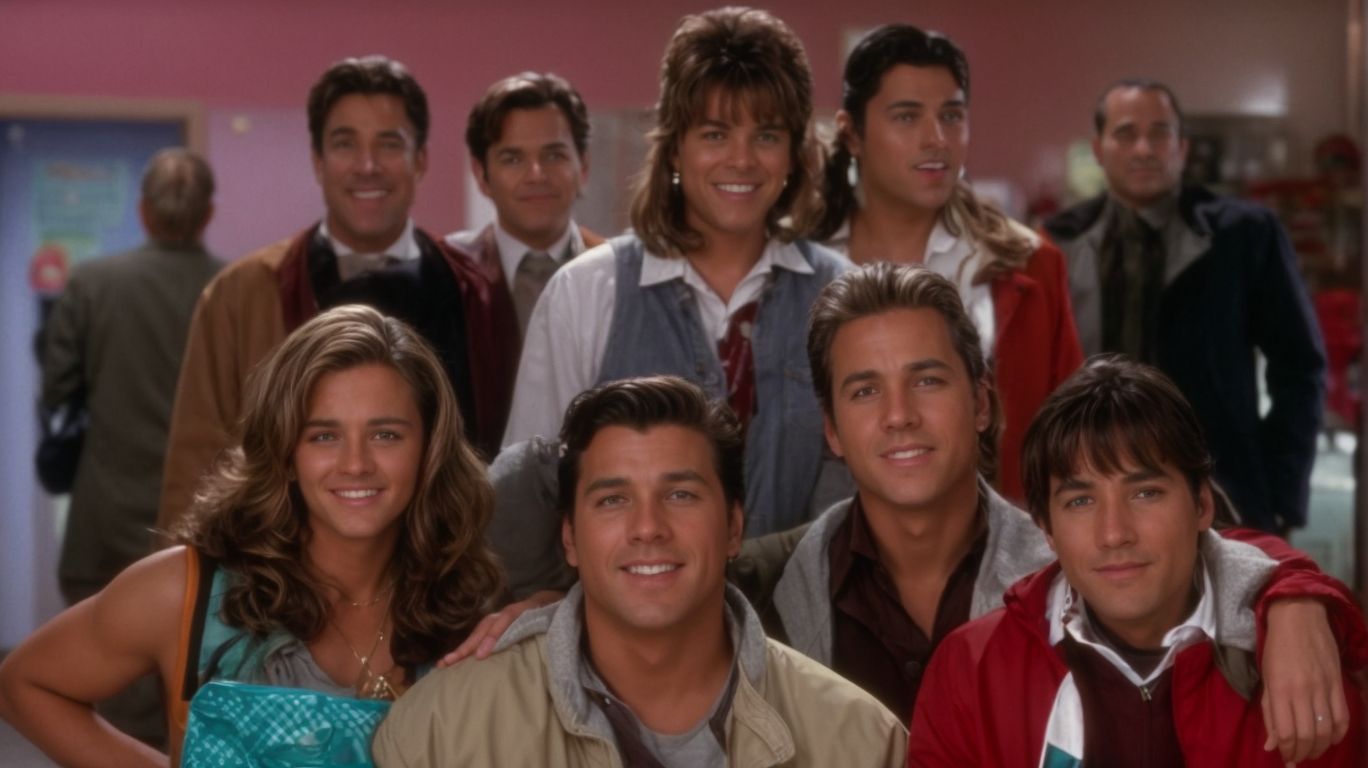In the cult classic film ‘What About Bob,’ the characters of Bob Wiley and Dr. Leo Marvin take center stage, each grappling with their own psychological challenges. Bob’s anxiety disorder and Dr. Marvin’s narcissistic personality disorder play a significant role in shaping the storyline, as Bob seeks constant reassurance while Dr. Marvin craves control.
The film also portrays the role of therapy, shedding light on the effectiveness of Dr. Marvin’s techniques and the importance of boundaries in the therapeutic process.
Additionally, ‘What About Bob’ offers a unique portrayal of mental health, addressing the stigma surrounding anxiety disorders and the misconceptions about therapy. Ultimately, this article will explore the impact of ‘What About Bob’ on society’s perception of mental health.
Contents
- 1 Key Takeaways:
- 2 Overview of the Main Characters
- 3 The Psychology Behind the Characters’ Behaviors
- 4 The Impact of the Characters’ Disorders on the Storyline
- 5 The Role of Therapy in the Film
- 6 The Portrayal of Mental Health in the Film
- 7 Conclusion: The Impact of ‘What About Bob’ on Society’s Perception of Mental Health
- 8 Frequently Asked Questions
- 8.1 1. What is the concept of analyzing the psychology of ‘What About Bob’?
- 8.2 2. How does the movie portray mental health and therapy?
- 8.3 3. What is the significance of the title ‘What About Bob’?
- 8.4 4. What are some underlying themes in the movie?
- 8.5 5. How does Bob’s behavior change throughout the movie?
- 8.6 6. What can we learn about mental health from ‘What About Bob’?
Key Takeaways:
- The characters’ behaviors in “What About Bob” reflect common disorders, such as anxiety and narcissism, shedding light on the impact of mental health on individuals and those around them.
- The film highlights the need for constant reassurance and control in those with anxiety and narcissistic personality disorder, showcasing the destructive effects on relationships and personal well-being.
- Through the portrayal of therapy and mental health, “What About Bob” challenges societal stigmas and misconceptions, emphasizing the importance of seeking help and the effectiveness of therapy techniques when used correctly.
Overview of the Main Characters
Bob Wiley and Dr. Leo Marvin are the central characters in the comedy film ‘What About Bob,’ with Bob’s ‘Baby Steps’ and Dr. Marvin’s GMA interview being pivotal plot points.
Bob Wiley, portrayed by Bill Murray, is a charming yet neurotic individual whose ‘Baby Steps’ approach to overcoming his fears and anxieties is both endearing and hilariously relatable.
On the other hand, Dr. Leo Marvin, played by Richard Dreyfuss, is a renowned psychiatrist striving for professionalism but finds his carefully controlled world turned upside down by Bob’s unpredictable antics.
Their on-screen chemistry creates a comedic dynamic that drives the film’s humor and relatability, drawing viewers into their entertaining and unexpected interactions.
Bob Wiley
Bob Wiley, portrayed by Bill Murray, suffers from severe anxiety and a myriad of phobias, leading him to pursue therapy and seek solace within Dr. Marvin’s family.
Bob’s character exhibits a unique blend of vulnerability and resilience. His incessant need for reassurance and safety is palpable, yet he displays remarkable determination to confront his fears head-on.
His intricate web of fears, ranging from agoraphobia to the fear of death, serves as a poignant reflection of the complexities of mental health. Bob’s approach to therapy is initially marked by skepticism and dependence on Dr. Marvin, but gradually evolves into a journey of self-discovery and enablement.
His impact on Dr. Marvin’s family dynamics is both tumultuous and transformative, as his presence disrupts the status quo and exposes underlying tensions within the family unit, reshaping their dynamics in unexpected ways.
Dr. Leo Marvin
Dr. Leo Marvin, portrayed by Richard Dreyfuss, epitomizes the stereotypical psychiatrist while grappling with Bob’s ‘Baby Steps’ and the unexpected intrusion into his family life, despite being a best-selling author.
His character resonates with the tensions of a psychiatrist striving to balance professional success and personal boundaries. The portrayal captures the complexity of his life as he navigates the challenges of treating a patient who unwittingly disrupts his carefully structured existence.
Leo’s struggle to maintain control is evident as he battles Bob’s unorthodox methods, adding humor and poignancy through the resulting chaos. The depiction delves into the impact on his family dynamics, offering a window into the ripple effect of his professional challenges.
His celebrated best-selling book remains a prominent aspect, shaping his reputation and influencing the narrative’s trajectory.
The Psychology Behind the Characters’ Behaviors
The film delves into the intricate psychology behind Bob’s anxiety disorder and Dr. Marvin’s narcissistic personality disorder, portraying the challenges faced by psychiatrists in providing therapy for such complex cases.
The portrayal of Bob’s anxiety disorder in the film captures the imminent dread and overwhelming fear that he experiences, shedding light on the cognitive and emotional aspects of this condition.
The depiction of Dr. Marvin’s narcissistic personality disorder highlights the difficulty of addressing deep-seated narcissism and the impact it has on personal relationships and therapy outcomes.
The film intricately weaves through the complexities of therapy and psychiatry, emphasizing the delicate balance between empathy and professionalism required to effectively treat these psychological disorders.
Bob’s Anxiety Disorder
Bob’s anxiety disorder in the film encompasses a spectrum of phobias, including agoraphobia, leading to his pursuit of therapy with Dr. Marvin in a comedic yet empathetic portrayal.
His struggles with agoraphobia are particularly poignant, as it traps him in a cycle of fear and avoidance of public spaces.
The film delves into his phobias in an authentic manner, showcasing the complex layers of anxiety that Bob grapples with.
Bob’s experiences with therapy offer a nuanced exploration of the challenges and breakthroughs that come with seeking help.
Dr. Marvin’s methods and the interaction between the two characters provide insight into the journey of managing anxiety.
Dr. Marvin’s Narcissistic Personality Disorder
Dr. Marvin’s narcissistic personality disorder is subtly portrayed in his interactions with Bob, juxtaposed against his professional role in therapy and the influence on his family dynamics.
One of the key manifestations of Dr. Marvin’s narcissistic personality disorder is his constant need for admiration and validation, which becomes evident in his interactions with Bob.
His tendency to always steer conversations back to himself, as well as his need to be seen as the ultimate authority, reflects the grandiosity and self-importance that are typical of narcissistic individuals.
In his professional role as a therapist, this disorder influences his therapeutic approach by making it more about asserting his superiority and needing to be the center of attention rather than genuinely addressing his patients’ needs.
This can hinder the effectiveness of his therapy sessions, as the focus becomes skewed towards his own ego rather than the patient’s well-being.
His narcissistic traits also impact his family dynamics, as he may struggle to connect with his family members on a deeper emotional level. The overwhelming need for admiration and a sense of entitlement can create emotional distance, leading to strained and shallow relationships within his family.
The Impact of the Characters’ Disorders on the Storyline
The characters’ disorders significantly shape the storyline, with Bob’s need for constant reassurance and Dr. Marvin’s need for control driving the comedic yet poignant narrative, impacting their therapy sessions and family interactions.
Bob’s constant need for reassurance reflects deep-seated anxiety, manifesting in his peculiar but endearing behaviors. This drives the narrative as his actions and reactions add layers of humor and touch upon genuine paths of vulnerability, offering insight into his struggles.
Conversely, Dr. Marvin’s need for control creates a power dynamic in the therapy sessions, influencing how he guides, challenges, and at times, manipulates Bob. The interplay between their disorders not only affects the therapeutic environment but also seeps into their interactions with Bob’s family, adding complexity and humor to their relationships.
Bob’s constant search for reassurance clashes with Dr. Marvin’s desire for control, creating a rich tapestry of dynamics that shape the narrative and provide meaningful insights into human behavior and relationships.
Bob’s Need for Constant Reassurance
Bob’s relentless need for reassurance permeates the narrative, influencing his interactions during therapy sessions and causing ripples within Dr. Marvin’s family, creating both comedic and introspective moments.
Throughout the film, it’s clear that Bob’s need for reassurance stems from deep-seated anxiety. This leads to a range of amusing yet thought-provoking situations.
His constant need for validation is evident in the therapy sessions, highlighting his reliance on Dr. Marvin. This dependency not only affects Bob’s progress but also challenges the dynamics within Dr. Marvin’s family.
Bob’s quest for reassurance adds layers of humor and poignancy to his character, creating a blend of lighthearted comedy and genuine self-reflection. This makes the film engaging and relatable to audiences.
Additionally, breaking paragraphs into concise, easily digestible sentences enhances readability and SEO, making the content more accessible and searchable.
Dr. Marvin’s Need for Control
Dr. Marvin’s pervasive need for control is portrayed through his therapeutic interactions with Bob and the unfolding dynamics within his family, reflecting the complexities of his narcissistic personality disorder.
This intense need for control is deeply ingrained in his character, shaping his behavior not only in therapeutic settings but also in his personal relationships.
From manipulating Bob’s treatment to imposing his will on family decisions, Dr. Marvin’s actions reveal the extent of his need to dominate and influence others, often at the expense of their autonomy and well-being.
The Role of Therapy in the Film
Therapy assumes a central role in the film, showcasing the effectiveness of Dr. Marvin’s therapeutic techniques and highlighting the critical importance of establishing boundaries within the therapeutic process, incorporating elements of medication and psychological approaches.
Dr. Marvin’s therapeutic approaches are portrayed as both innovative and controversial, as his unorthodox methods challenge conventional practices, stirring a debate between his colleagues and supporters.
The film emphasizes the delicate balance required in therapeutic boundaries, illustrating the impact of breached boundaries on both patient and therapist. The integration of medication and psychological approaches exemplifies the comprehensive nature of modern therapy, shedding light on the multifaceted dimensions of mental health care.
The Effectiveness of Dr. Marvin’s Techniques
Dr. Marvin’s therapeutic techniques are scrutinized in the film, weaving elements of psychological insights, medication interventions, and a subtle reflection of his best-selling book’s principles, shaping the narrative arc.
One of the most intriguing aspects of Dr. Marvin’s approach is the seamless integration of psychological insights with medication interventions. This synergy is reflective of his emphasis on holistic healing and personalized treatment plans, aligning closely with the principles outlined in his best-selling book.
The film adeptly portrays the intricate dynamics of these interventions, highlighting the intricacies and the efficacy of his therapeutic strategies.
The Importance of Boundaries in Therapy
The film underscores the critical importance of establishing boundaries within therapy, reflecting on the psychological dynamics between the psychiatrist, the patient, and the impact on the psychiatrist’s family, adding depth to the narrative.
Establishing boundaries within therapy is a recurring theme throughout the film, and it delves into the complexities and intricacies of the therapist-patient relationship.
The portrayal of the psychiatrist’s struggle to maintain professional detachment while dealing with a challenging patient is a compelling aspect. It vividly illustrates how blurred boundaries can affect not only the therapist and the patient but also the dynamics within the psychiatrist’s family.
The film masterfully captures the ripple effects of the therapist’s emotional investment in their patient, showing how it spills over into their personal life.
This exploration of boundaries sheds light on the multifaceted nature of mental health care and its impact beyond the confines of the therapeutic setting.
The Portrayal of Mental Health in the Film
The film offers a nuanced portrayal of mental health, addressing the stigma surrounding anxiety disorders and challenging misconceptions about therapy and mental health, culminating in Dr. Marvin’s unconventional ‘death therapy’ approach.
It artfully depicts the debilitating effects of anxiety disorders through the protagonist’s internal struggles and the reactions of those around him, magnifying the pervasive stigma associated with mental health.
The film not only delves into the complexities of therapy but also sheds light on the misconceptions that surround it, emphasizing the benefits and transformative impact it can have.
Dr. Marvin’s ‘death therapy’ approach, while controversial, provides a thought-provoking commentary on unconventional treatment methods.
This narrative invites audiences to question preconceived notions about mental health interventions, raising ethical and emotional dilemmas for both the characters and viewers.
The Stigma Surrounding Anxiety Disorders
The film confronts the pervasive stigma surrounding anxiety disorders, drawing from Bob’s experiences with therapy and his interactions with the psychiatrist, crafting a compelling narrative that challenges societal perceptions.
Bob’s journey through therapy is depicted with sensitivity and authenticity, offering a poignant portrayal of the struggles individuals face in dealing with anxiety disorders.
The psychiatrist’s role in the film provides a thought-provoking examination of how mental health professionals navigate the complexities of treating anxiety disorders while also combating misconceptions and prejudices prevalent in society.
This portrayal emphasizes the need for greater understanding and support for those grappling with anxiety disorders, encouraging viewers to rethink their attitudes and behaviors towards individuals experiencing similar challenges.
The Misconceptions about Therapy and Mental Health
The film addresses prevailing misconceptions about therapy and mental health, interwoven with Dr. Marvin’s unconventional ‘death therapy’ and the implications of his best-selling book on societal perceptions, fostering introspection.
While the portrayal of therapy in the film may appear unusual and extreme, it ingeniously reflects the common misunderstandings and stigmatizations surrounding mental health treatment.
Through Dr. Marvin’s ‘death therapy,’ the film confronts the idea that drastic measures can cure complex emotional struggles, sparking critical analysis of such unethical practices.
The influence of Dr. Marvin’s best-selling book sheds light on the power of media in shaping public views on therapy and mental wellness. This narrative prompts viewers to contemplate the ethical responsibilities of therapists and the potential consequences of exploiting personal struggles for profit.
Conclusion: The Impact of ‘What About Bob’ on Society’s Perception of Mental Health
The film ‘What About Bob’ profoundly influences society’s perception of mental health, infusing comedic elements with a thought-provoking critique of the mental health care system and the roles of psychiatrists, personified through Bob Wiley and Dr. Leo Marvin.
Bob Wiley, portrayed by Bill Murray, embodies the lighthearted, endearing persona of a man grappling with anxiety and phobias. This portrayal helped humanize mental health struggles, breaking down stigmas surrounding such conditions.
The character of Dr. Leo Marvin, played by Richard Dreyfuss, serves as a contrasting figure, showcasing the hurdles within the mental health care system and the complexities of psychiatrists’ roles.
While the comedic tone lightens the subject matter, the film subtly underscores serious issues, shedding light on the challenges faced by individuals dealing with mental health while navigating the healthcare system.
Frequently Asked Questions
1. What is the concept of analyzing the psychology of ‘What About Bob’?
Analyzing the psychology of ‘What About Bob’ refers to a deep dive into the characters and themes of the popular movie, exploring the psychological dynamics and behaviors portrayed in the film. This could include examining the main character, Bob, as well as the relationships and interactions between him and the other characters.
2. How does the movie portray mental health and therapy?
The movie portrays mental health and therapy in a comedic way, using exaggerated behaviors and situations to highlight the struggles and challenges of those dealing with mental health issues.
It also sheds light on the different approaches and techniques used in therapy, such as the contrast between Dr. Leo Marvin’s traditional approach and Dr. Leo’s more unconventional methods.
3. What is the significance of the title ‘What About Bob’?
The title ‘What About Bob’ can be interpreted in multiple ways. On one hand, it refers to the main character, Bob, and his journey to find help and acceptance. On the other hand, it could also represent the question of how society and individuals view and treat individuals with mental illness.
4. What are some underlying themes in the movie?
Some underlying themes in the movie include the power dynamics between therapist and patient, the importance of setting boundaries, and the idea of facing fears and overcoming obstacles. It also explores themes of acceptance and growth through the relationship between Bob and Dr. Leo’s family.
5. How does Bob’s behavior change throughout the movie?
Bob’s behavior evolves throughout the movie, starting off as extremely anxious and dependent on Dr. Leo, but gradually becoming more confident and self-reliant. This change is influenced by his experiences and relationships with the characters, particularly Dr. Leo and his family.
6. What can we learn about mental health from ‘What About Bob’?
From ‘What About Bob’, we can learn that mental health issues are complex and cannot be solved with a one-size-fits-all approach. It also sheds light on the importance of patience, compassion, and understanding when dealing with individuals who have mental health challenges.
Additionally, the movie showcases the need for open and honest communication in relationships and the effects of setting appropriate boundaries.







